|
Perception of sake in Australia Australia still is not as vast as the international countries but we are getting there. In the first 20 years, the perception of sake did not exist in the minds of Australians which was the same with Japanese culture. Australians were still young in embracing the rice brew lack of understanding conflicted their minds to be willing to try. Only in the last 10 years, the love of Japanese culture started to grow due to the luxury of traveling to Japan. Australians were love-struck on the beauty and culture of food that it created an unforgettable experience. With this, it had open up locals' curiosity to the rice brew and the flight back home left local's hearts yearning to relive past leisures. Locals who either traveled or stayed in Japan started to yearn what they had missed. For locals, the access for Japanese sake through Japanese restaurants made it possible, however not all Japanese restaurants had sake on the menu and if they customers wouldn't understand how to best to appreciate the experience. Having sake available didn’t mean locals could appreciate it. Mostly they were confused about what made it so special. Japanese sake pairing with food although an enjoyable experience but nobody remembers the Japanese sake they drank and alas~ the sake was forgotten. To open the understanding of sake, locals could experience through tasting but proper sake etiquette must be practiced to make the experience leave a good impression. Most local's first perception of sake especially if they have traveled to Japan was it must be drunk hot. Confuse locals commonly would not appreciate how alcohol in itself to be drunk this way, hence they were discouraged to give Japanese sake any room for chance. When the possibility or option was given to locals to drink sake at room and cold locals felt more comfortable to give it try. Locals were always biased towards sake, but persistent persuasion opens their hearts. By allowing locals to taste broke the iceberg and with proper instructions allow the locals to feel safe. Most locals were shocked at first how this brew came to be and through guidance wanted more. As hot sake was not willingly accepted straight away, the option of room and cold did. Most locals had always had the perception of sake was strong. It was hard to understand why customers felt this way, but through taste analysis with each tasting, this opens up another form of lack of understanding. Locals' understanding of strength can be a variety of things, a customer may think it's strong because they don’t like a certain taste, or maybe they are looking for a particular taste. Have something too sweet maybe you feel it is strong, or having it too dry because it is not sweet whatever the case we cannot label sake this way. Asking the proper questions and doing a taste analysis brought the value of trust to locals more easily. Held back by perception can be like a "crime' against opportunities and new discoveries. Don't let the wrong perception of Japanese sake deprive you of a enjoyable experience.
1 Comment
York which is 95.9km from Perth which is about 1 hour and 20mins driving on National Highway and Great Southern Highway. The York festival is an annual festive event which is to honour the WARA art sculptures ( Wara art is Giant sculptures made from straw every year these dedicated artists construct beautiful artwork that is breathtaking which you encounter their hard work and effort. This year a special day was organised to celebrate A day of Japan it was the first time west Australians from the town of the York to celebrate and appreciate the wonderful Japanese culture and of course Japanese Sake. Sake Marlakey was held in Gallery 152 , Japanese Sake stations were organized to allow guests to interact with the tasting event as well as the flow of the Gallery. 6 beautiful sakes were a showcase for this event to allow the guests from York to really experience a diversity of sake. What most intrigued our guests was the different flavour profile that each sake made them feel, guests were really honest with their feelings towards the rice brew and stated which one they were accustomed to and reasons for the sake there were not. This demonstrates as I have been stating for so many years everybody tastes are different from each other. In the sake world, we don't expect you to love all sake, we are only human, the point of the matter is at least you kinda understand which kind of sake you do favour and why you don't. Our York guest was eager to try and also ask questions regarding the rice brew, and the same perception which always gets a mention about sake had risen again. Unless you have experience the journey and unless someone makes you understand you can't genuinely appreciate what Sake stands for. Blind tasting: As I was a solo act I couldn't cater to everyone at the same time while they were waiting for the tasting, so I had created a self-interaction station called "Test your palate" where guests can interact with the activity while waiting to try the sake. This station held 3 sakes dressed un Kimono wrap, the activity aimed to test guests' palates if they can remember the taste from the tasting selection. Guests are instructed to name the sake in number order to win a Prize. This activity was really fun for the guests, and all the guests were more than willing to participate. The mood rose with guests having a good time with sake that made guests willing to savour the experience. A highlight of the sakes was divided. As the guests' palates on the night were diverse. Junmai VS Junmai Ginjo VS Junmai Daiginjo There was no winner with this the range my selection I had chosen was enough to cater to most people's palates which demonstrates that one sake category cannot cater to all. Junmai : Sawahime vs Hakkaisan - Guests who like this range were into the red wines category, "give it to me bold and full of flavor." These guests enjoyed how it created layers of flavor every time they sip and made the journey feel longer, that all they wanted was more. I had Sawahime Yamahai Junmai served at room temperature for this effect as I wanted to guest to enjoy this lingering experience from Yamahai, Hakkaisan there was a clash between certain guests maybe I could have served this at room temperature also to get a more accurate response. This was served cold as I wanted the guest to feel that water texture of the sake which Hakkaisan Sake Brewery is famous for using, which had intrigued me with Hakkaisan Tokubetsu upon my first discovery with its experience. Some guests enjoyed the softness of the palate, drinking at ease where others felt it didn't have too much of an effect on them. But clearly, I stated to them the temperature was the key of the character profile we would to accurate analyse customers who didn't like the sake or they didn't like the temperature it was served at? Junmai Ginjo Let me experience a pure texture! Hakutsuru vs Urakasumi - guests who enjoyed these ranges were into mostly white wines I love it silky and smooth and deliciously sweet. Guest who enjoyed with Hakutsuru Superior Junmai Ginjo were captivated on how soft and elegant it made their palates feel that made the experience so inviting. As Hakutsuru Superior Junmai Ginjo uses the spring water from Miyamizu it is only fitting to state the experience was what was expected.\ Urakasumi Junmai Ginjo Zen rose to this occasion for the elegant rice presence the sweetness from the rice were drawn to guest followed by the indulgement of silky smoothness. Some guest stated it was comparable to white wine. Junmai Daiignjo Ippin vs Chiyomusubi Let the rice shine in character! both sakes were served at room temperature as I wanted to create the character in both sakes which made the sakes shine more. Ippin brought forth that chewy mouthfeel that you could mistake for Tokubetsu Junmai making like smooth mouthfeel but if we're to have it cold it would be dry and clean the viscosity of the rice would become apparent towards the end. Chiyomusibi Junmai Daiginjo shines more at room temperature when it isn't paired with anything. The gentle mouth feel of Tottori rice becomes more apparent allowing guest savour rice notes which make Tottori proud along with smooth mouthfeel coating around the palate. Wherever I may go
Where ever the Sake World wants to take me , one thing I always can guarantee You can always have a good time with Japanese Sake Sake will always leave a smile in your Heart! No Sake ! No Life! Back in the Swan Valley, appreciating what makes us WA. Glorious weather for a Sunday morning session to learn about sake. Perception was really what was highlighted here , our guests were all first timers to Japanese sake and didn't know what to expect. The unknown to the Sake world brought forth curiosity and excitement the same time. When asked about their experience to Japanese sake it was discovered that the perception of the "rice brew" had misguided them to open their hearts. Some of our guests felt that sake might be too strong as they had assumption from what other people said . Some guest felt they definitely would not like the "rice brew" before even trying it. I have encountered these fake assumptions and incomplete experiences to sake throughout my years and frequently and I make it a point to correct this wrong perception people have in Sake. Our First sake: Ozeki Nama Chozo Sake “Nama-Chozo-Shu” is pasteurised only once before bottling to bring you a refreshing flavour and tanginess only in a chilled sake. The chilling brings out the refreshing aftertaste, mellow aroma and moderate sweetness. Honjozo is a another classificaiton of sake which is usually sake that has distilled alcohol added . We experimented with two different temperatures to let our guest experience different characters and flavours. It was educated to our guest that aroma experience and palate experience do differ from each other. Our guest were fairly new to the experience , some couldn't capture the aroma at all as they were unfamiliar with sake. I have encountered this all the time in my workshops , most guest think there is expectation to capture the aroma or you must have a peculiar taste to accept the flavours of sake. This is not required, sake is unbiased, we do not educate you to make sure you have a level of palate or aroma experience. The sake world does not judge it actually encourages you to find the character and let it create on its own to suit your own taste. Sake Culture: Guest thoroughly enjoyed this beautiful tradition and learning the japanese customs made guest learn to appreciate the sake culture evenmore. As manner is preached in Japan through tradition our guest followed through with the custom without hesitation. So the next sake is Sawahime Yamahai Junmai Sake from Tochigi Prefecture: So this sake is one of the traditional method and used mainly as a yeast starter. This methods normally creates more lactic flavours and full body flavoured sake. Guest who enjoyed mostly red wine style or rich whiskies tend to relate to the full body flavour of Sawahime Yamahai. The contrast of the room and cold temperature really left an impression of difference how the same sake can change so much in different temperatures. Cheese & Sake Does it work? of course it does ! Cheese is the perfect companion to sake because they both have the same ingredient ( lactic acid) Our first pairing comes from the Miyagi Prefecture and is called Urakasumi Junmai. Junmai means pure rice and this sake has a rice polishing ratio of 65 % using manumasume rice which is known to full body and have rice richness. This is a perfect well balanced sake to suit all palates. Kytren Chèvre Fresh style is fresh cheese coming from Gidgegannup, using goat’s milk. After Pasteurisation the milk is gently heated to form a curd. The warm curd are then poured into individual mould, to drain overnight The fresh chèvre is very soft and light in texture. That has a pleasant feel in the mouth.Its flavour is delicate and not overpowering. Our second pairing with is Ippin Plum Nigori from Ibaraki prefecture.
Last sake is a very different style altogether it will totally surprise your palate. The next sake is Hakutsuru Koshu sake from Hyogo prefecture Koshu (means matured sake) this is aged sake that was brewed 2007 and preserved in a tank. It has matured aroma , smokey and rich in taste which resembles a whisky or a guinness beer. The flavour starts out really bold and heavy body but suddenly disappears with cleansing on the palate which doesn't linger. The Cheese we are pairing with is Italian Blue Gorzonola. Italian Blue (Cows Milk)
Highlights for sake was Urakasumi & Sawahime most guests loved the mouthfeel on the palate and richness of of sake rice which left deliciousness. The favourite cheese was all , as most of our guest were cheese lovers they couldn't fault too much about the cheese but the pairing was something the wouldn't have guessed or even comprehend that could exist. It is always a joy to see fresh new faces at my workshops and I am so glad everytime our guest have taken something to remember about the Sake World. |
Categories |
© COPYRIGHT 2021 ALL RIGHTS RESERVED.

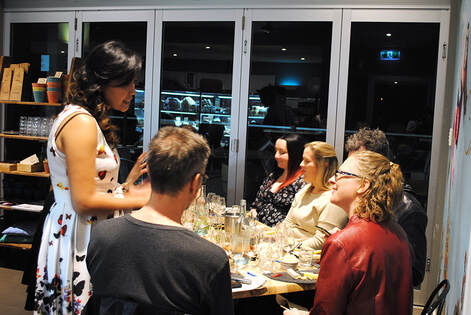
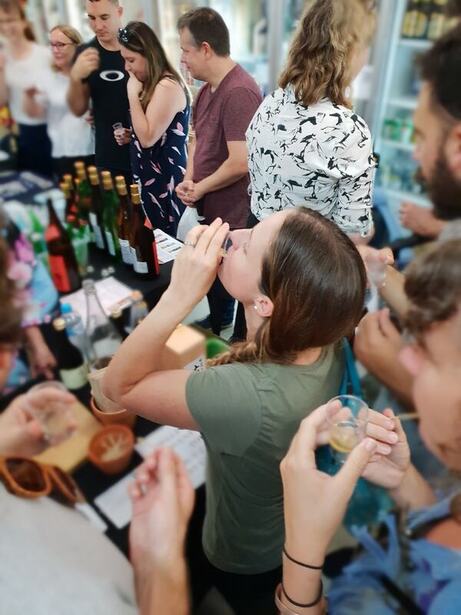
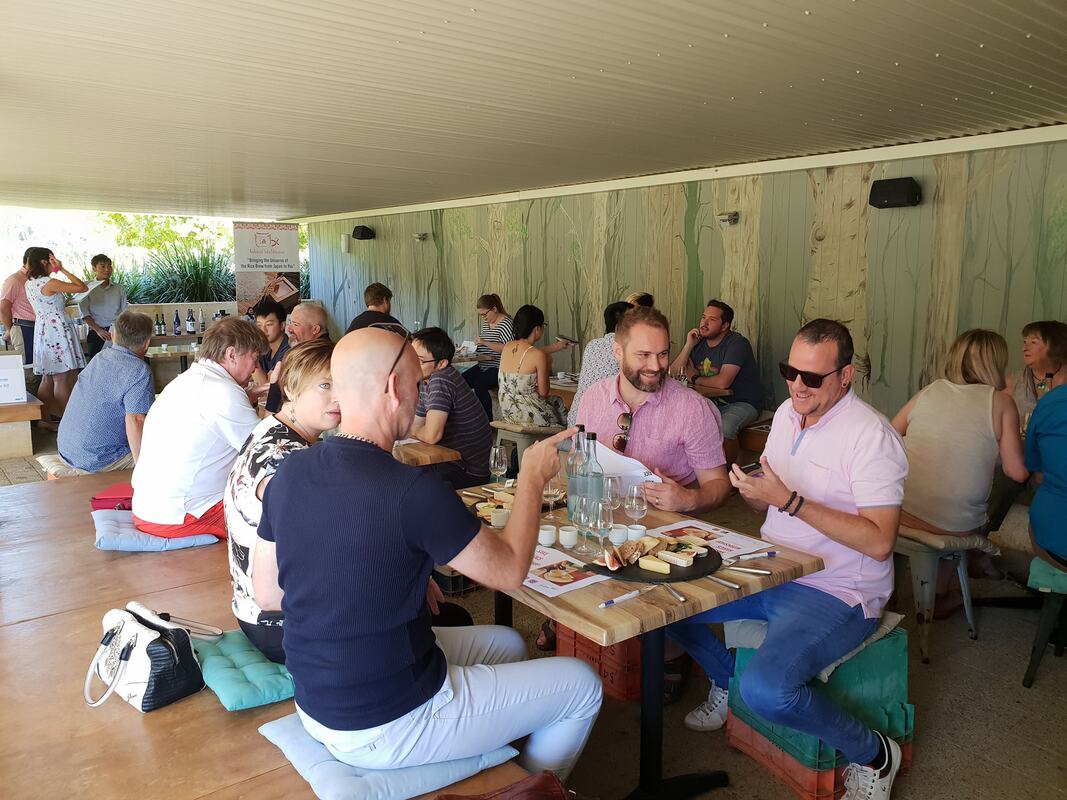
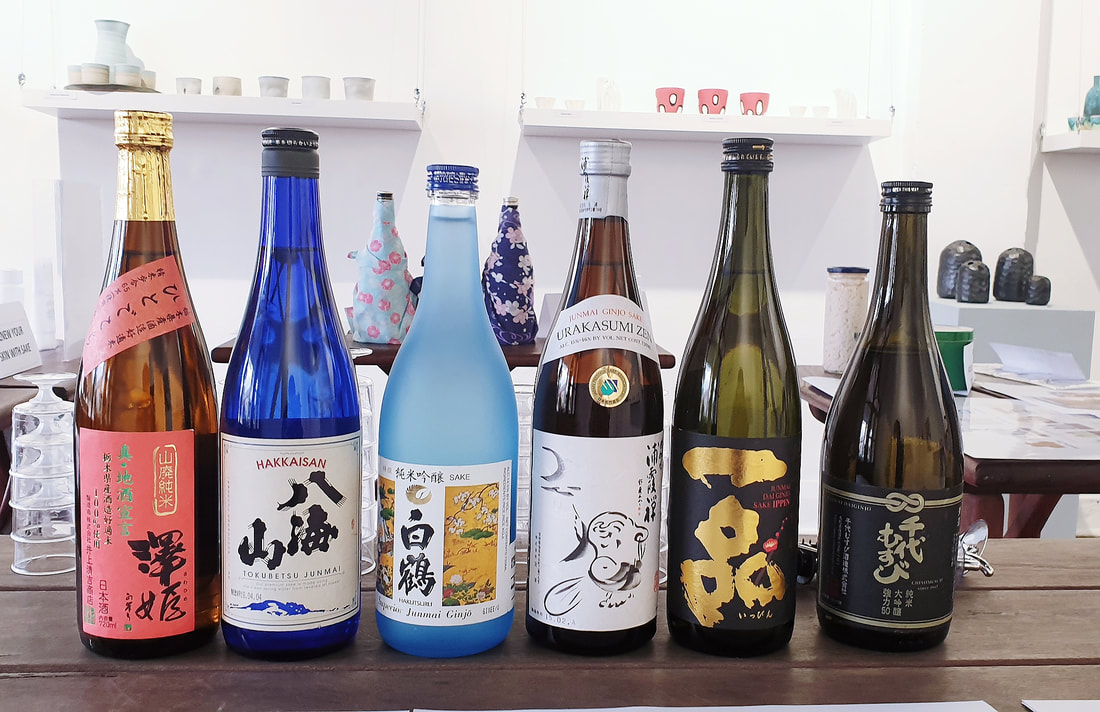
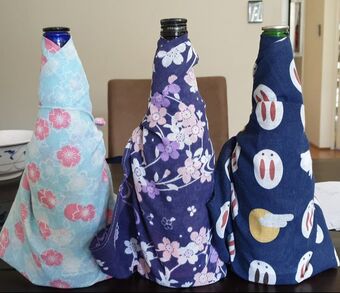
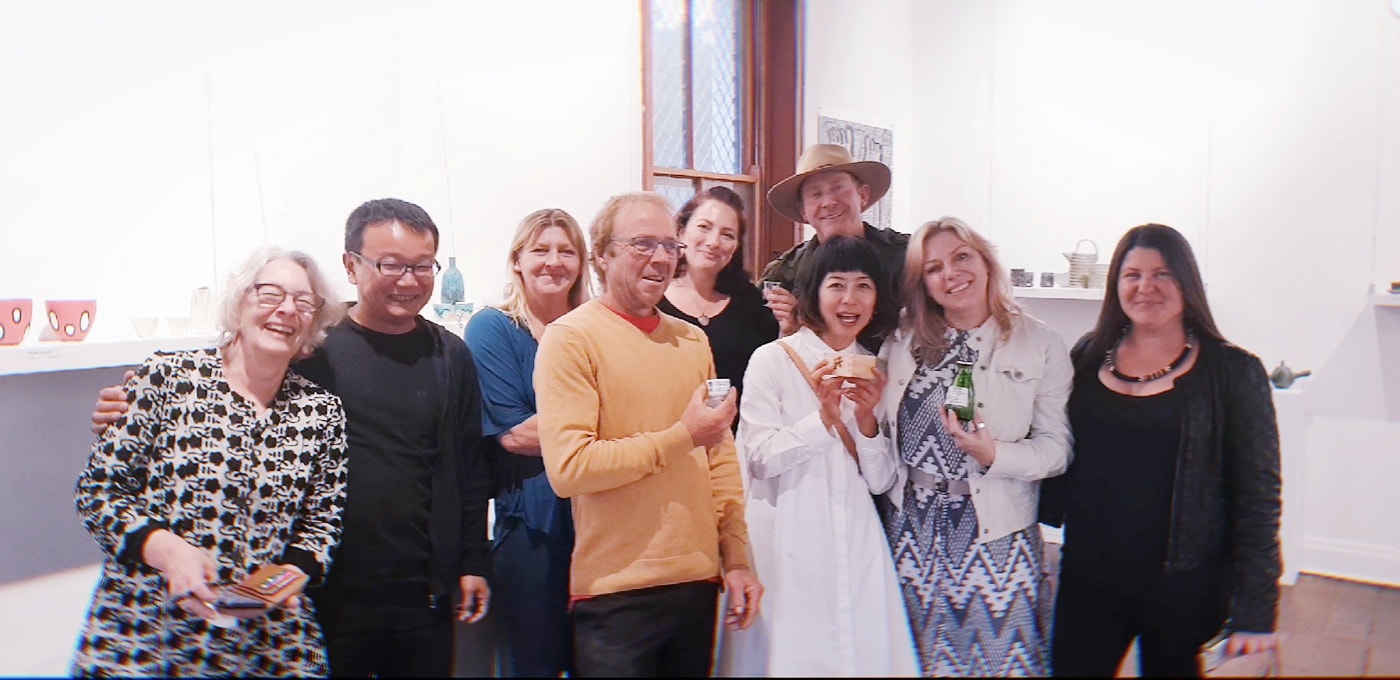
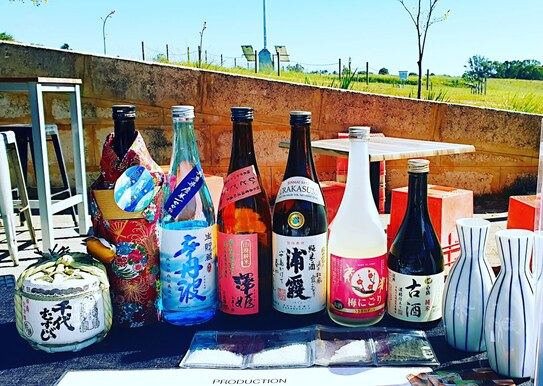
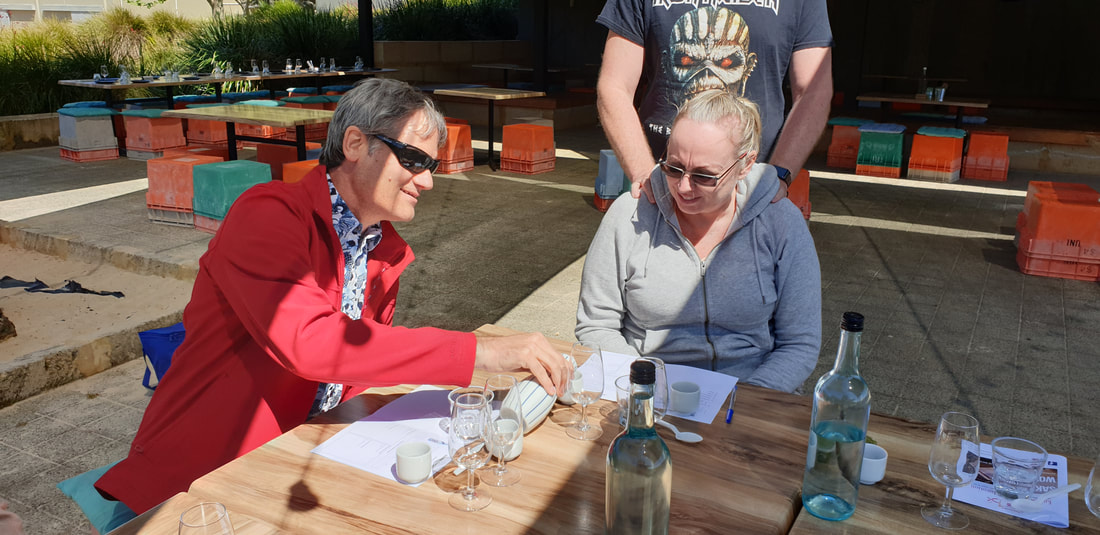
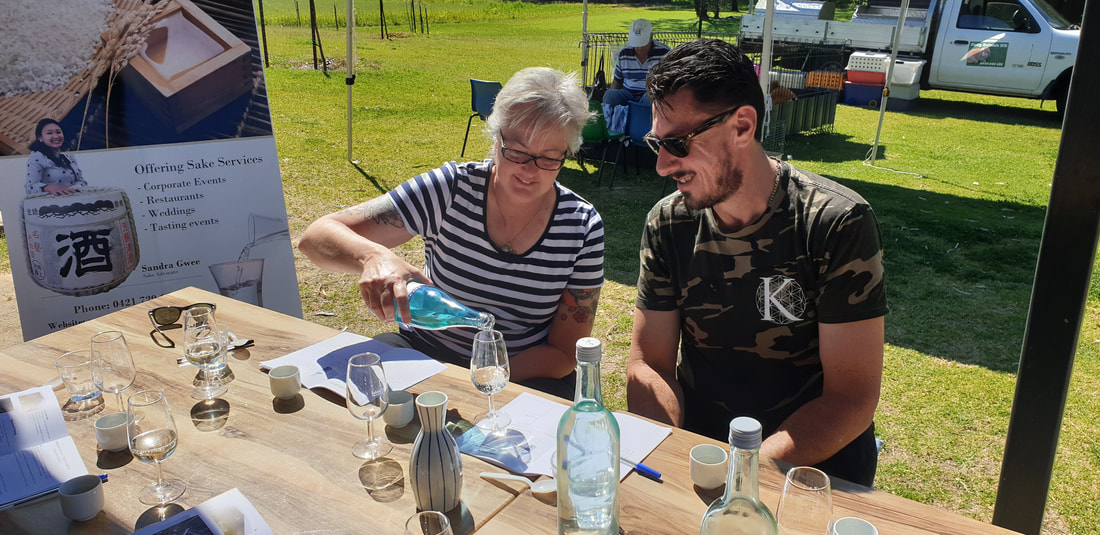
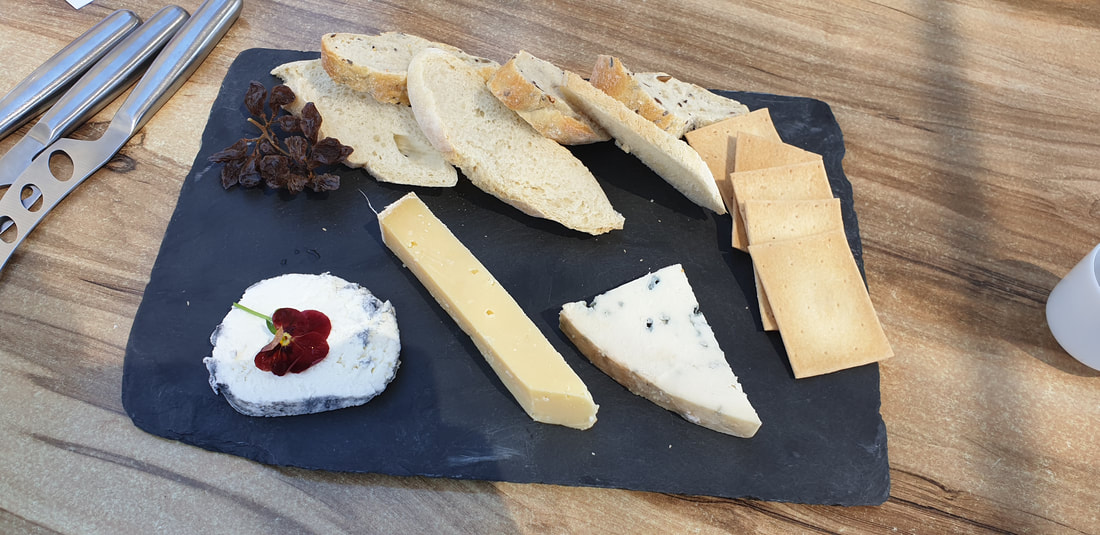
 RSS Feed
RSS Feed